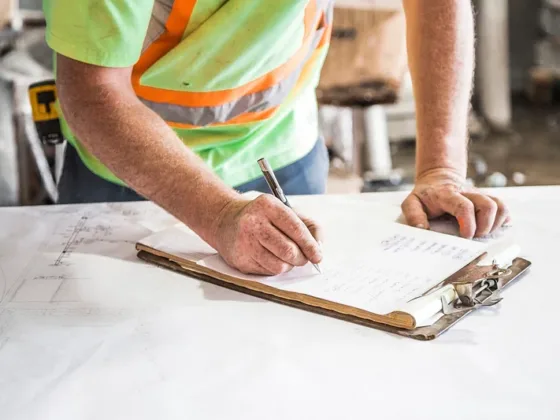Table of Contents Show
You’ve got a dirty job. Construction sites are messy, chaotic places that produce their fair share of waste. Everything from drywall scraps to used copper piping could drop to the floor at any time, and it’s all got to go somewhere.

Have you ever considered all the things you throw away at the end of a job and where it’s all going? Waste disposal, in general, is a substantial environmental concern, and every day, we’re making more trash. But are we doing everything we can to ensure its ends up in the right place?
According to the Environmental Protection Agency, anywhere from 230 to 600 million tons of construction and demolition waste is produced annually in the United States. And if the pace of development is any indication, that number is sure to increase.
Anyone can hire a dumpster and haul everything off their site and into a landfill, but there are better ways to handle your construction debris. Consider these options before landfilling all the waste on your next job.
Follow the Local Rules
First and foremost, you must check with your state, county, and municipal government rules before disposing of any construction debris. The standards dictating what you can throw away and where it should go vary across county and state lines, and you need to be fully versed on how to dispose of every kind of construction debris.
For example, some states may limit the amount you can haul off-site daily. Other areas could have different recycling rules that allow you to recycle things you couldn’t recycle at a previous job in another place.
Checking the local rules helps you stay compliant, too. The last thing you need is a violation or fine from the area environmental agency. Whether you agree with the rules or not, Waste Management regulations exist for a reason, and all aim to keep the areas outside your site as clean and healthy as possible.
With that being said, if you’re tempted to save some money and illegally dump your debris in a random dumpster, resist! Illegal dumping is taken very seriously and can result in fines and even jail time, depending on where you are and what you’ve dumped.
Read Also:
Use a Trash Hopper
If you want to dispose of your debris properly, use trash hoppers. These portable, durable mini dumpsters are versatile and keep your site clean and organized, no matter what you’re building.
Get a series of self-dumping hoppers to keep around your site. Try to keep your debris organized as you throw it away by using a hopper for landfill debris, debris you can recycle, and debris you can donate. You’ll probably want to hand hazardous waste on a case-by-case basis.
When the hoppers are full, simply grab a forklift and take the waste where it needs to go! If you make a waste management plan and stick to it, the trash hoppers will do the heavy lifting for you.
Donate Unwanted Materials
Whether you’re renovating a home or overordering supplies, donating what you don’t want is a great way to reduce the amount of waste produced on your site.
During renovation projects, many components of the old space can be salvaged and reused in another home. Try to save vanities, lighting, counters, countertops, and appliances in good working order.
Then, research places where you can donate your unwanted materials. For example, Habitat for Humanity actually has more than 900 ReStore locations across the country accepting gently used and unwanted building materials. The proceeds from these retail locations benefit Habitat and its great work.
Recycle What You Can
These days, there are many opportunities to recycle construction debris. In fact, in 2018, 76% of all construction and demolition waste in the U.S. was recycled.
Steel is one of the most popular building materials to recycle. But, depending on where you are, there may be recycling opportunities for other materials like plastic, glass, cardboard, and more. Be sure to check with your local waste management agency to find out what you can recycle on your site.
Some contractors opt out of recycling because they don’t want to sort their debris. However, if you sort your waste as you go, you can easily separate the recyclables from the trash. Doing it this way will be far easier and help you keep recyclables from being landfilled.
Take Care of Hazardous Materials
Every site produces some amount of hazardous waste. But whether you’re removing asbestos or lead paint or simply having a lot of excess paint to dispose of, there are some things you can’t haul off to the landfill.
Create a designated area to store your hazardous waste safely. Then, check each item and follow the directions for disposal. You’ll also want to make sure you comply with any local rules or regulations governing the correct disposal of such items.
No matter how much waste you make on your site, you can properly manage your construction debris with the proper guidance and plan. Taking care of your garbage is about so much more than keeping your site clean. It’s about keeping the planet clean, too!









